Top Tier CPU Air Coolers Q3 2015: 9-Way Roundup Review
by E. Fylladitakis on July 6, 2015 8:00 AM ESTThe Reeven Okeanos RC-1402
Reeven is a Taiwanese newcomer in the industry. Naturally, most people reading this probably never even heard the company name before today. The company was founded just over a year ago and currently only offers CPU coolers, fans and fan controllers. Reeven sent us their most powerful CPU cooler as well, the Okeanos (RC-1402).
The box that the Reeven comes supplied in is relatively small. Nevertheless, the protection appears adequate, with polyethylene foam protecting the cooler and the bundled items packed inside a cardboard box.
The bundle is a little crudely packed and virtually kept to a minimum. Reeven supplies only the hardware necessary for the mounting of the cooler, a single dose of thermal grease, wire clips for up to three cooling fans, speed reducers for the two provided fans and a leaflet with basic installation instructions.
Reeven supplies two cooling fans alongside with the Okeanos, one 120 mm and one 140 mm fan. Both fans have black frames and genista yellow blades. These are relatively simple models, with sleeve bearings, lacking fancy blades or vibration absorbers. There is one thing of note about these two fans though: they are ridiculously powerful, with the 140 mm and the 120 mm fan rated for a maximum speed of 1700 RPM and 1800 RPM respectively.
The Okeanos is a symmetric dual tower CPU cooler, with strangely narrow towers for its class. Although the difference is very small, the fins of each tower are not precisely geometrically symmetric, with the front side having three small and the rear side one long indentations. The top fin is a 1 mm thick aluminum cover with the company logo punched on it.
The wire fan installation clips do allow moving the front fan upwards in order to gain some RAM clearance - as long as the case is wide enough, of course. Installation-wise, they are a bit of a pain, as Reeven's approach is far too crude, with the wire clips just going straight into the fan holes and clipping onto the side of the fan.
Furthermore, the frame of the 120 mm fan just barely touches the extruded sides of the fins. It is very easy for the 120 mm fan to be installed with only one side on the extruded fins, increasing noise and reducing performance.
Even though the Okeanos initially looks very simple, the bottom of the cooler makes it very interesting. The base is split between a nickel-plated copper lower part and a steel top part, providing mechanical cohesion and retention. In between these two parts, there are six heatpipes, secured with a very generous amount of solder. The two central heatpipes are 8 mm thick, while the other four heatpipes are 6 mm thick, making this the only cooler with an asymmetric heatpipe configuration in our review. The contact surface is well polished and free of imperfections, yet not machined down to a perfect mirror finish.


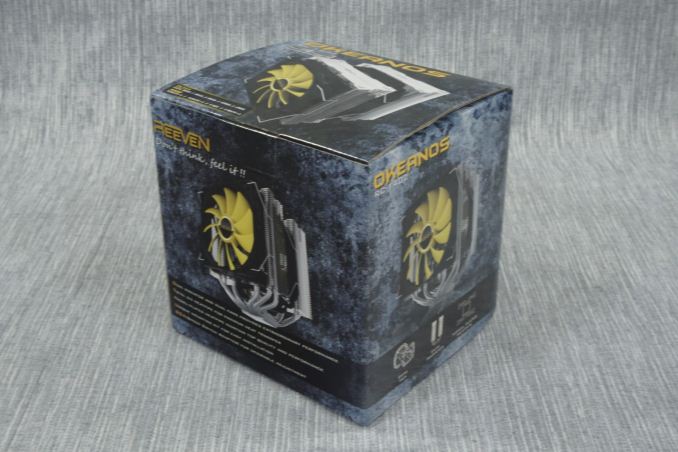
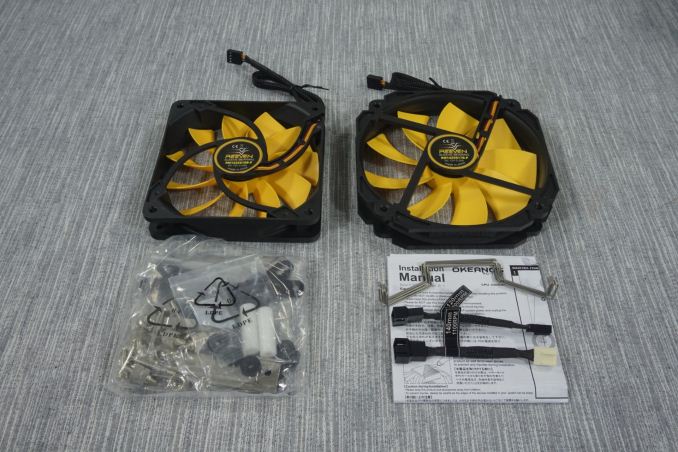
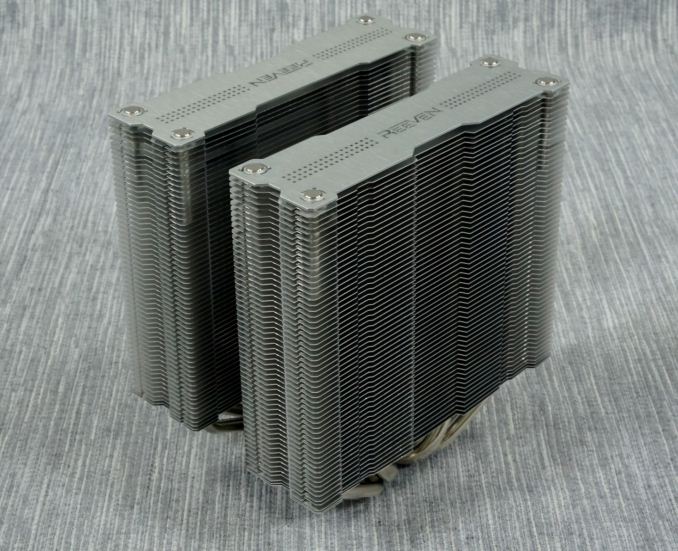
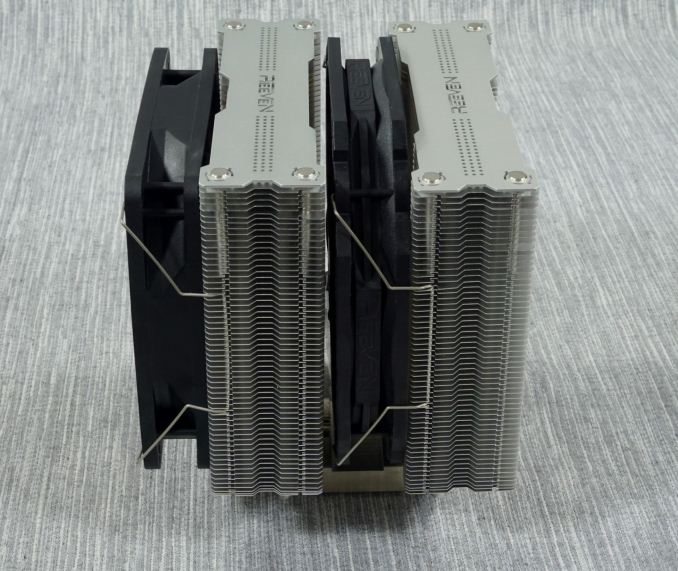
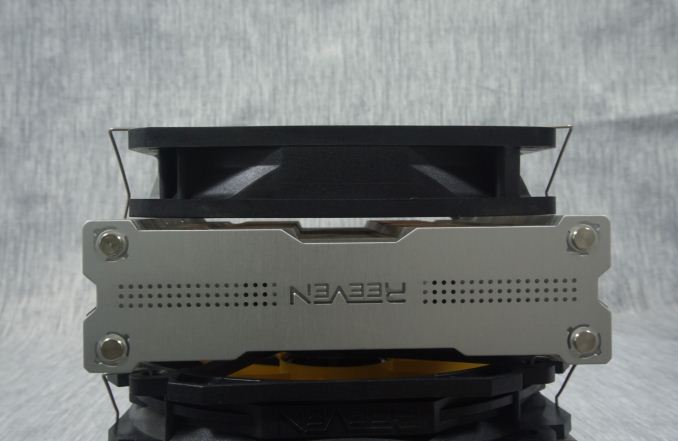
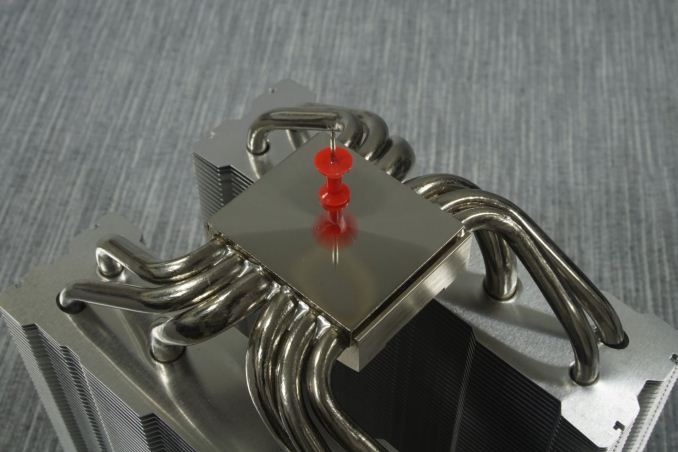








135 Comments
View All Comments
kraznal - Thursday, July 16, 2015 - link
LOL - "Liquid-based cooling solutions are becoming easier to install and AIO kits generally are hassle-free, yet they are still not favored by the majority of the users. Their space requirements, increased complexity and price hold most people to simple air-based cooling solutions."so they become easier to install, hassle-free but somehow managed to keep their complexity? what are talking about??? :)
anyway, I am sure you know this and you just overlooked this fact to support your own story, liquid cooling sets are NOT more expensive (Corsair H50 costs $60 shipped), are NOT bigger (H50 compared to any of the air coolers here for example), and are NOT complex (whatever you mean by that), or even the noise factor where air coolers need to run on higher RPMs to achieve same cooling effectiveness as liquid coolers - simply there is no comparison between liquid solution and air solution. Cheap Corsair H50 is far superior in every way than those colossal monstrosities you are reviewing here now. Smart user would never chose an air cooler simply because it doesn't make sense to chose an old and less effective idea.
Therefore please do not spread bullshit just so you can cash a check for an article.
rleigh - Saturday, July 25, 2015 - link
Liquid cooling doesn't always work well. I got a Corsair H60 to put in a Corsair Obsidian case with an ASUS Sabertooth R2.0 mainboard and an AMD FX8350 processor. It worked brilliantly with CPU temperature at ~35C under load. Unfortuately, the layout of the case and lack of airflow around the CPU heatsink lead to the VRMs/MOSFETS around the CPU reaching temperatures of over 85C, no matter how I arranged the case fans. I replaced it with a Noctua cooler similar to this one which also kept the CPU nice and cool, but with the side effect of the large 14mm fans producing sufficient airflow onto the mainboard to eliminate the dead space which caused overheating.This isn't to say that closed loop coolers are bad; their performance can be very good. But they aren't compatible with every case/mainboard.
kraznal - Wednesday, August 5, 2015 - link
First: it's been almost a month - E. Fylladitakis - must be on vacations since he has yet to reply to my comments.Second: rleigh - very sorry to hear that you had to install additional cooling for your motherboard. It is best to keep high air flow inside the case, if you didn't provide that then no wonder you had an overheating problem.
Cvengr - Friday, December 25, 2015 - link
http://serverfault.com/questions/263931/why-datace...Here's an interesting link regarding the use of water cooling in data centers (limited to air cooling). Primary issue is safety.
alexbagi - Monday, March 7, 2016 - link
Good picks. I'd also suggest looking at http://www.144hzmonitors.com/cpu-cooler-buyers-gui... for guidance.I am going with the 110i myself, as I need water cooling.